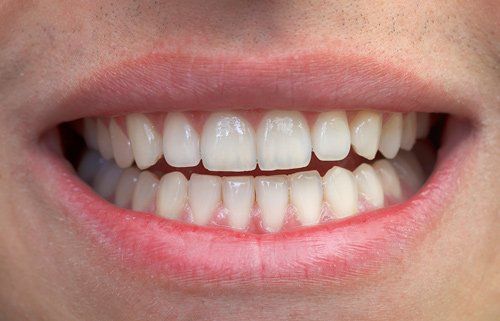
Nearly two-thirds of Americans report that they fear root canals, but close to 95% of Americans say that they want to keep their natural teeth. If you fall into both of these categories, there is a bit of a contradiction—root canals actually allow you to keep your existing teeth.
Most of the fears around root canals have to do with their undeserved bad reputation. Root canals are no longer that painful, and in fact, they offer multiple advantages. Here's a look at just a few of them.
1. You Get to Keep Your Tooth
With root canals, there's usually a choice. Do you want to get a root canal or have your tooth extracted? In almost every case, it's better to keep your tooth.
When you have a tooth extracted, that empty spot can be unsightly. It can also attract debris and become a breeding ground for bacteria. In some cases, your remaining teeth may start to shift into that area, and that can throw off your bite or cause discomfort. If you get a root canal and keep your tooth, you don't have to worry about any of those issues.
2. Root Canals Are a Relatively Simple Procedure
In spite of their negative reputation, root canals are a fairly straightforward procedure. They are actually like any other type of cavity filling. The dentist scrapes out the decay and puts in the filling. The only difference is that root canals are for cavities that extend into the roots of your teeth.
As a result, the process is slightly more time consuming and complicated than a regular filling, but overall, it's a fairly basic process.
3. You Can Get Root Canals from Dentists and Specialists
Both general dentists and endodontists do root canals. According to some research, endodontists do about 43% of root canals. That means that regular dentists handle over half of these procedures.
As a consumer, you are in luck. You get to choose which option works for you. However, there are cases where your dentist may recommend a specialist. For example, if you need sedation dentistry or any special accommodations, your general dentist may refer you to an endodontist.
4. Root Canals Eliminate Pain
As explained above, root canals are for cavities that go deep into the roots. These are the most painful cavities that you can have. You're likely to experience sensitivity with hot and cold drinks or foods, but beyond that, you may have pain that radiates deep into your mouth. A bad toothache can feel like your whole face is "on fire". Once you go in for your root canal, all of that pain becomes a distant memory.
In addition, you don't have to worry about the issue spreading. Untreated cavities and infections can lead to serious issues including heart disease.
If you're worried about pain during the procedure, don't be. Dental pain treatments have come a long way over the years. Your dentist will give you a local anesthetic, and if you feel anything during the treatment, they give you more Novocain. If you want a bit more relaxation, you can opt for the floaty feeling of nitrous oxide (laughing gas), or you can even "go under" with sedation.
5. Root Canals Can Prepare Your Tooth for a Crown
If the enamel of your tooth is mostly intact, the dentist can do a root canal and just put in a filling. However, if your tooth is chipped or cracked, you may need a crown. A crown is a porcelain cap that goes over your existing tooth. However, you can't put a crown over a rotten tooth—a root canal helps prepare your tooth for the crown.
Do you have a toothache? Think you might need a root canal? Then, contact us at Dr. Steven Sampson, DMD today. We are committed to making your dental experience as painless and efficient as possible.

If you have a tooth in need of a root canal, or just suspect you do, then it is important to obtain a dental exam and have a root canal procedure performed as quickly as possible. Here’s what you should know about the hazards of leaving a decaying tooth untreated for longer than necessary and the benefits of choosing a root canal over a tooth extraction.
The Hazards Of Putting Off A Root Canal
If you have a tooth in need of a root canal, then you may be experiencing pain off and on. If you haven't experienced this pain yet, then realize that it can be very intense and difficult to relieve with over-the-counter pain relievers. However, there are additional dangers to not receiving the treatment your tooth needs.
Bacteria Can Travel Into Your Bloodstream
Realize that if your tooth is in need of a root canal, the tooth pulp is either exposed or will likely become exposed when your current cavity progresses. Exposed tooth pulp can become infected by bacteria very easily, and this bacteria can travel into your bloodstream. When oral bacteria travel into your bloodstream, it increases your chance of developing dangerous blood clots that can cause a stroke or heart attack. Bacteria can even lead to a potentially deadly systemic bacterial infection called septicemia.
Your Infection Can Spread to Other Oral Tissues
Infections in lower teeth can spread to tissues under your tongue and cause an infection called Ludwig's Angina. Infections in upper teeth can spread to sinus cavities, your cheeks, and even your eyes. If not treated promptly with antibiotics, these infections can destroy your healthy tissues.
It’s important to seek antibiotics for tooth infections, especially those that have spread to other tissues. However, the only way to completely eliminate the infected tissues and keep infections from returning is to have a root canal or have the tooth extracted.
The Benefits Of Seeking A Root Canal Instead Of Extraction
If your decayed or damaged tooth is in the front of your mouth, then seeking root canal treatment for it instead of having it extracted will help you preserve your beautiful smile. However, if you are thinking of having a decayed or damaged molar extracted because you think you won't miss it, then realize that there are many benefits to choosing root canal treatment instead of extraction.
The benefits of opting for a root canal instead of a tooth extraction include:
- The continued ability to chew your food properly. After having any tooth in your mouth extracted, eating your favorite foods can become difficult and even painful.
- Encouraging teeth to stay in proper alignment. When one tooth is extracted from your smile, the adjacent teeth can shift when the missing tooth is not replaced.
- Elimination of the bone-loss hazard of tooth extractions. After a tooth is extracted, the jaw bone underneath it is no longer stimulated by healthy chewing. Lack of stimulation will cause the bone to reabsorb and, over time, can contribute to bone loss in your jaw.
- Reduction in your risk of TMJ disorder. After having multiple teeth extracted, your bite may shift. This can contribute to the development of Temporomandibular Joint Dysfunction (TMJ). This disorder can cause jaw pain, facial pain and ear pain.
Saving your natural teeth instead of having them extracted is always the best option. However, realize that if you wait too long to obtain your root canal treatment, your tooth may deteriorate to the point where the only option is extraction. You can avoid this risk and the hazards of an untreated tooth infection by seeking the root canal treatment you need from Dr. Steven Sampson, DMD and his staff.

An estimated 42 percent of children between the ages of 2 and 11 have cavities, according to the Centers for Disease Control.
In addition to regular dental checkups, brushing and flossing, you can also help protect your child's oral health through their diet. Research suggests that children who have cavities tend to have a dietary pattern that increases the risk for cavities and gum disease.
Here's what you need to know about how to keep your child's teeth healthy.

You understand the importance of regular dental visits. But, does your child? Probably not. And that makes getting your little one to the dentist a challenge. Before you start stressing, take a deep breath and check out our tips and tricks for making your kiddo's office visit easier.
Role Play
Whether your child has never been to the dentist or just can't remember their last trip, a role playing session can help to reduce anxiety. It's not likely that your child is truly afraid of the dentist. It's probably more of a general fear of the unknown. Some children may also worry about the strange instruments or the possibility of pain. Helping your child to understand that the dentist (and their instruments) are there to help, and not hurt, may give your child that nudge they need.
Set up a pretend play dentist's office in your living room, using the couch as the exam room chair. Your kiddo can craft their own DIY instruments or use their imagination to make up invisible ones. Take turns role playing the dentist and the patient. Show your child what the dentist will do and then let them take over and act out the part of the pro.
Talk To A Friend
Set your child up with a friend who has been to the dentist already (and who remembers it). Look for an older child who is willing to share their experiences with your kiddo.
Ask the other child to explain what happens at the dentist, how it felt and what concerns they may have had. Understanding that other kids have fears too may help your child feel better about their own emotions. Knowing that the other child had a positive experience will put your little patient at ease and may even get them excited for the vist.
Get Artsy
Some children have difficulty talking about their feelings – especially very young children. If your child doesn't have the words to explain how they're feeling about the dentist visit, forget about a lengthy conversation. This may only frustrate your child.
Instead of talking, give your creative child paper, pencils, markers or crayons. Why? Art is a language too. It uses symbols to tell a story. Kind of like letters are symbols that we put together into words that tell stories. Ask your child to draw what they think going to the dentist means to them. Okay, so your toddler won't exactly have the ability to create a portrait or picture-perfect representation. Younger kids who don't have the fine motor skills to draw people and places can pick colors for their feelings. For example, yellow might mean that they're happy about the visit, while blue might symbolize sadness.
Read Books
Before your child's first day of preschool you read a book about it. When the family took a train to visit grandma, you read a book about transportation and vehicles. And, when your child is getting ready to go to the dentist – well, you can read a book about it.
Snuggle up with your tot and turn the pages of a dentist-themed children's book. If you're not sure where to start, these easy reads are completely kid-friendly:
- Doctor De Soto, by William Steig
- ABC Dentist, by Harriet Ziefert and Liz Murphy
- Zack at the Dentist, by Jonathan London and Jack Medoff
- My Dentist, My Friend, by P.K. Halliman
- Just Going to the Dentist, by Mercer Mayer
Going First
Sometimes your child just needs to see someone else do something to feel comfortable with it. That's the genius of choosing a family dentist. You can both visit the same practice.
Schedule your appointment first. Bring your spouse, an older sibling or the sitter to sit with your child as they watch you in the chair. Why bring an extra pair of hands? If your child gets bored watching you and wanders off, you shouldn't leave it up to the office staff to babysit.
As your child watches you get a cleaning and exam they can see that it's really no big deal. By the time it's their turn in the chair, your child will know what to expect and feel an added sense of comfort.







